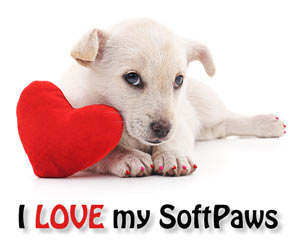Hypertrophic Osteodystrophy in Dogs (HOD)

Hypertrophic osteodystrophy is a condition in dogs that can cause pain, swelling, and inflammation in the joints as well as systemic symptoms. It occurs during puppyhood and can have signs that range from slight to severe.
What Is Hypertrophic Osteodystrophy?
Hypertrophic osteodystrophy occurs during the development of a dog's bones. It's an autoimmune condition that causes inflammation in the growth plates. Most of the time, signs of this condition show up between seven weeks and eight months of age, with the majority of clinical cases happening between three and five months.
Hypertrophic osteodystrophy (HOD) usually occurs in large and giant breed dogs who have a period of very fast growth. Medium-sized dog breeds can also develop HOD, however, and it is also quite common in Weimaraners. Other breeds that have a higher incidence of hypertrophic osteodystrophy than others include:
- Boxers
- Doberman Pinschers
-
Great Danes
- Labradors
- Rottweilers
- St. Bernards
- Irish Wolfhounds
During an episode of HOD, the blood flow decreases to the growth plate at the end of a long bone near the joint. That means there is an interruption to the formation of bone in that area. New bone laid down there is not as hard as it should be.
This condition can be quite painful and is sometimes difficult to diagnose because its symptoms are similar to other puppyhood conditions such as panosteitis, elbow dysplasia, and ununited anconeal process.
Hypertrophic osteodystrophy can permanently damage a dog's growth plates, leading to long-term lameness.
Clinical Signs of Hypertrophic Osteodystrophy
When a dog is suffering from HOD, they may show many different symptoms. Some of them can be quite vague and are not directly related to the joints. This is another reason diagnosis can take some time, as veterinarians may wish to rule out other systemic autoimmune conditions such as lupus or infectious agents that can cause similar symptoms such as Lyme disease.
Some of the signs of HOD in dogs include:
- fever
- decreased or absent appetite
- ocular and nasal discharge
- red or pus-filled bumps on the skin
- diarrhea
- labored respiratory sounds
- lameness
- lethargy
- swollen joints
Symptoms of HOD often wax and wane. The first episode may last a few days to a week, and then the symptoms may go away for a while, only to recur again a few weeks or months down the road.
Diagnosis of Hypertrophic Osteodystrophy
When your veterinarian is diagnosing this condition, he or she will do a complete physical exam and take a thorough history from you. Then, the doctor may wish to run some blood work.
Next, your dog will need a set of x-rays, which will probably show soft tissue swelling over the affected joints.
Treatment of Hypertrophic Osteodystrophy in Dogs
Puppies with HOD are treated with anti-inflammatory medications such as NSAIDs or corticosteroids.
Do not give your dog any medications without input from a veterinarian. Some human medications aren't safe for dogs. Also, it's crucial that medications be given at proper dosages and that steroids be tapered off once the dog is on them, under the direct supervision of a veterinarian.
It's likely that your veterinarian will add anti-pain medications to your dog's treatment regimen.
Other medications are given as necessary for other symptoms or new symptoms that develop as a result of treatment, such as infections from immune-suppressing drugs or stomach upset from NSAIDs.
Your veterinarian will review your dog's current diet, including vitamins and supplements, and ensure the puppy is in an appropriate growth diet for their size and condition. Any supplement or vitamin meant for increased or rapid growth will likely be removed.
Your dog will need to be monitored closely for response to treatment and how well their body handles the medication.
In rare cases where the bone ends up deformed, surgery may be necessary.
Can You Prevent HOD in Dogs?
While there is no known way to prevent the development of this condition in dogs and it is not known to be genetic, in general, large-breed dogs should be fed a balanced diet, discouraged from doing too much jumping until they're finished growing, and kept on soft surfaces as much as possible.
You May Also Like These Articles:
Dogs with Arthritis May Benefit from Stem Cell Therapy
IVDD: Intervertebral Disc Disease in Dogs
Osteochondritis Dessicans of the Humeral Condyle (OCD)
Disclaimer: This website is not intended to replace professional consultation, diagnosis, or treatment by a licensed veterinarian. If you require any veterinary related advice, contact your veterinarian promptly. Information at DogHealth.com is exclusively of a general reference nature. Do not disregard veterinary advice or delay treatment as a result of accessing information at this site. Just Answer is an external service not affiliated with DogHealth.com.
Notice: Ask-a-Vet is an affiliated service for those who wish to speak with a veterinary professional about their pet's specific condition. Initially, a bot will ask questions to determine the general nature of your concern. Then, you will be transferred to a human. There is a charge for the service if you choose to connect to a veterinarian. Ask-a-Vet is not manned by the staff or owners of DogHealth.com, and the advice given should not delay or replace a visit to your veterinarian.



